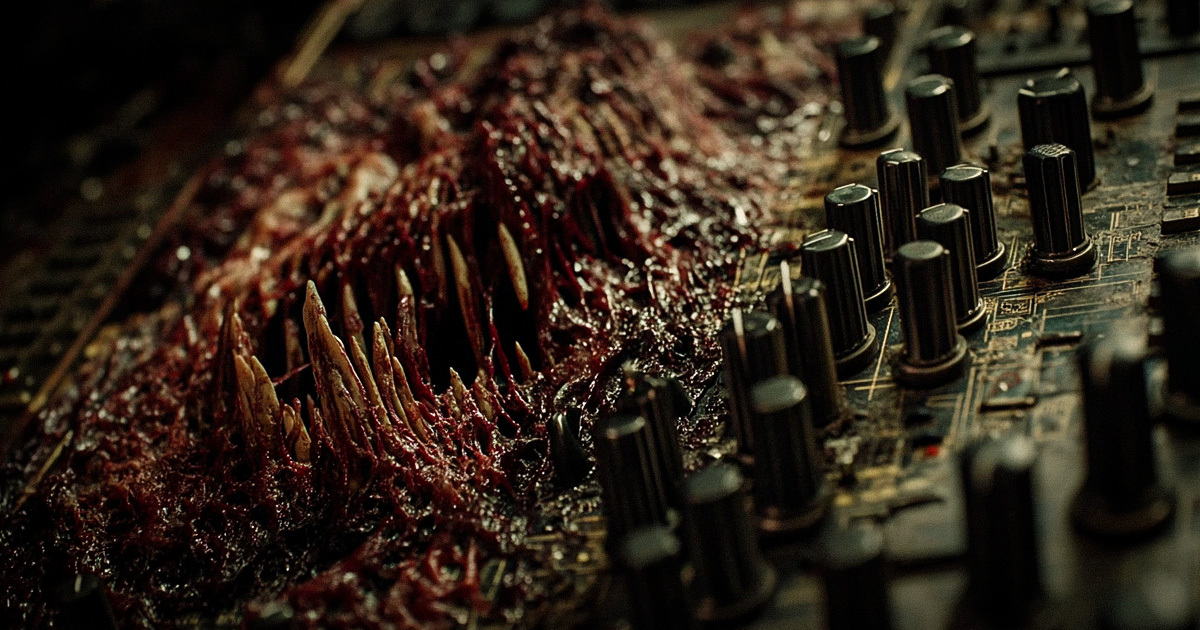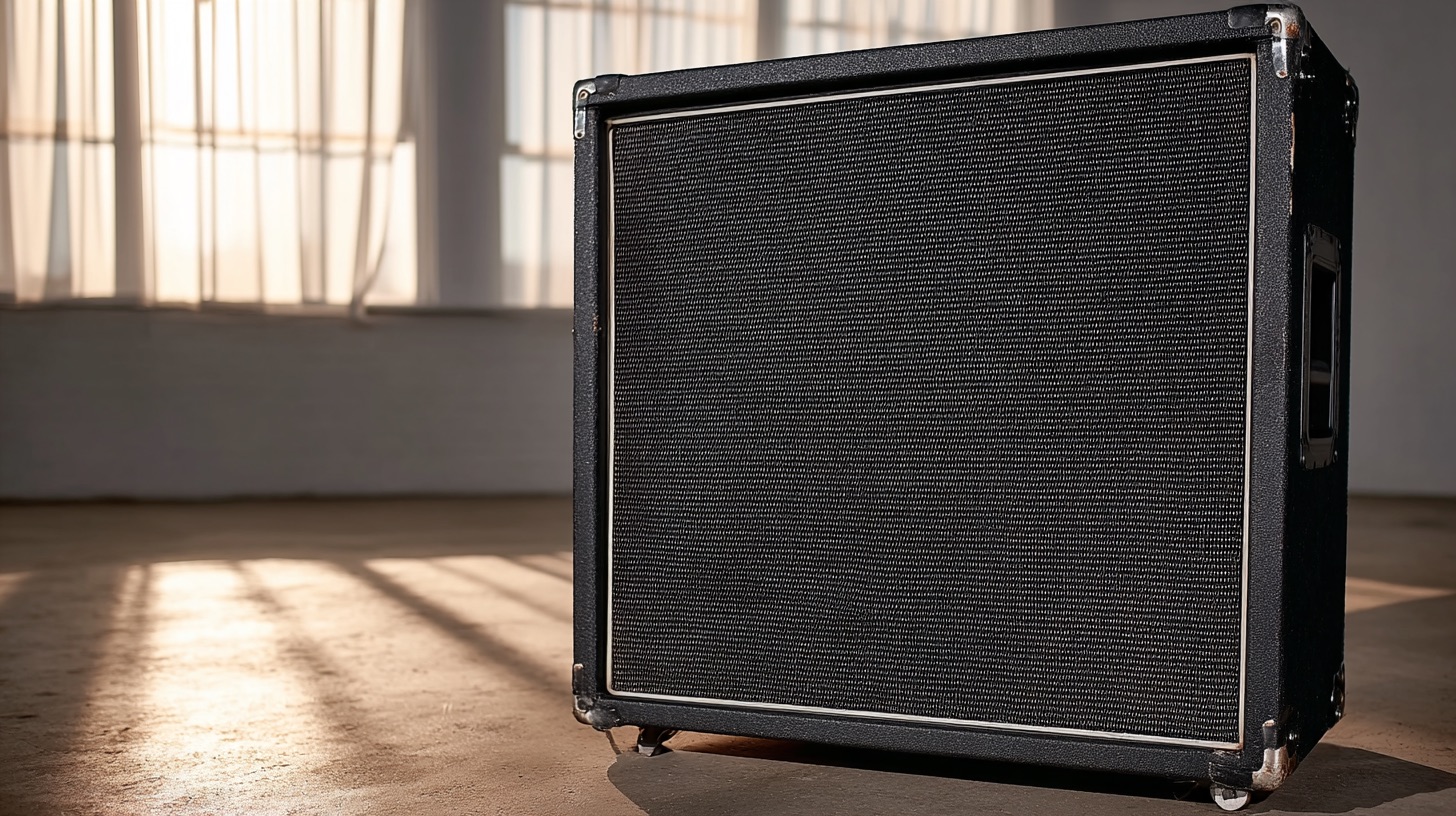
EQ For Metal Producers: The Ultimate Guide
Nail The Mix Staff
The modern metal mix is a battlefield. Guitars tuned lower than a limbo stick, drums hitting with the force of a meteor shower, vocals channeling demons, and bass trying to find its place in the ensuing beautiful chaos. It’s a lot. And while killer source tones are your first line of defense, equalization (EQ) is the unsung hero, the razor-sharp scalpel that brings brutal clarity and definition to this glorious noise.
Too many modern metal mixers see EQ as just a “fix-it” knob – something to tame harshness or scoop out mud. And sure, it does that. But its true power in metal lies in its ability to sculpt. EQ defines each instrument’s rightful space in the sonic spectrum, enhances its core character, and ensures it contributes maximum impact to the overall assault. This isn’t just about correcting problems; it’s about making bold, creative statements.
This guide will dive into core philosophies for EQing modern metal, tackling the infamous low-end war between guitars and bass, making your drums both cut through and pound with precision, ensuring even the most brutal vocals remain intelligible, and figuring out when the so-called “rules” of EQ are best left broken.
The Low-End Warzone: EQing Guitars & Bass
Modern metal often lives and dies by its low-end. Get it right, and you have a mix that’s powerful, defined, and physically imposing. Get it wrong, and you’re left with a muddy, undefined mess.
Taming the Wall of Sound: EQing Low-Tuned, High-Gain Guitars
- The “Mud” Zone (Often 200-500Hz): This is enemy number one for low-tuned, high-gain guitars. It’s where that undefined, congested sound often lurks, making riffs unintelligible. Careful, often surgical, EQ cuts in this region are usually necessary. The trick is to remove the mud without sacrificing the essential weight and warmth of the guitars. Sweep around with a narrow Q to find the offending frequencies and then gently attenuate them.
- Clarity vs. Weight: It’s a constant balancing act. You want those detuned riffs to have immense power, but each note still needs to be articulate, especially during fast tremolo picking or complex rhythmic passages. This often involves not just subtractive EQ in the lows/low-mids, but also careful boosts in the upper midrange to bring out pick attack and note definition.
- High-Passing Guitars: How far can you push that high-pass filter on your rhythm guitars? Pretty far, often. Rolling off unnecessary sub-bass from guitars (sometimes up to 80-100Hz or even higher depending on the tuning and arrangement) is crucial for making dedicated space for the bass guitar and kick drum. Listen in the context of the full mix – you want the guitars to retain their power but not conflict with the true low-end instruments.
- Plugin Considerations: For surgical cuts, a clean digital EQ with a visual analyzer (like FabFilter Pro-Q 3 or similar) is invaluable. For broader tonal shaping, you might experiment with analog-modeled EQs that impart their own character, but precision is often key for cleanup.
Bass Guitar: The Anchor in the Abyss
With guitars often occupying frequencies traditionally held by bass, getting the bass guitar to be both felt and heard is a major challenge.
- Defining the Indefinable: The key isn’t just boosting the sub-bass. Often, the definition and clarity of low-end instruments come from their mid-range and even high-frequency content. Make sure the pick or finger attack (often in the 700Hz-2kHz range) is present, and that the upper harmonics that help define the notes aren’t being masked. Low-end instruments are frequently recognized more by their high-frequency details than their fundamental tones.
- Low-End Rumble & Mid-Range Clank: You need both. The deep rumble provides the foundation, but the mids provide the aggression and allow the bass to cut through on smaller speaker systems. Don’t be afraid to let the bass have some grit and presence in the 800Hz-1.5kHz range if it helps it speak.
- Harmonic Relationship with Guitars: EQ the bass to complement the guitars. If your guitars have a significant dip around 250Hz, maybe that’s where your bass can have a bit more presence. Use an analyzer to spot frequency clashes, then make targeted cuts on one instrument to make space for the other. Always check these moves in the full mix.
Actionable Tip: Solo your bass and rhythm guitars. Use a spectrum analyzer to visually identify where their dominant frequencies are overlapping, especially in the low-mids. Make a mental note, then listen in the full mix. Try making a cut in that overlapping zone on the guitars. Does the bass suddenly have more definition without the guitars losing their power? Experiment.
More info:
- Neural DSP Workflow Hacks: Integrating Amps, Pedals & EQs
- EQing Archspire guitars w/ Dave Otero
- Dialing in Gojira guitars
- Surgical EQ on Meshuggah guitars
- Killer bass tones with Neural DSP Parallax
Drums That Cut & Pound: EQ for a Rhythmic Onslaught
Metal drums need to be an absolute force of nature. EQ is your primary tool for shaping each piece of the kit to achieve maximum impact and clarity (along with compression).
Kick Drums: Sub Impact & Beater Definition
- You need that visceral thump in the chest (often around 50-80Hz) and the sharp click of the beater (anywhere from 3-7kHz, depending on the kick and beater type) that allows it to slice through even the fastest double-bass patterns.
- Often, a cut in the “boxy” or “cardboard” region (around 300-600Hz) can clean up the kick significantly, making it sound tighter and more focused. This approach of shaping kick samples with EQ to fit the song is a common technique, as demonstrated by pros like Chris Baseford in his Nickelback Nail The Mix session.
Snares: The Crack, Body, and Air
- The snare is often the centerpiece of a metal groove. EQ helps you sculpt its key characteristics:
- Crack/Attack: The initial transient impact, usually found in the 3-6kHz range.
- Body/Fatness: The fundamental tone and weight of the snare, typically around 150-250Hz.
- Air/Sizzle: For brightness and to bring out the sound of the snare wires, often a gentle boost above 8kHz.
- Managing Hi-Hat Bleed: This is a classic problem. Hi-hats love to bleed into the snare mic. Careful, narrow EQ cuts (often in the high-mids where the hi-hat is most prominent in the snare mic) can help reduce this spill without making the snare itself sound dull or unnatural. This requires very precise listening and often a bit of trial and error.
Toms: Attack and Controlled Resonance
- You want to hear the initial stick attack of the toms so they don’t get lost in fast fills. A slight boost in their attack range (often 3-5kHz) can help.
- Toms, especially in metal, can have a lot of ring or sustain that muddies up the mix between hits. EQ (often in conjunction with gates) can help control this, tightening up the tom sound.
Overheads & Room Mics: Balancing Ambience and Clarity
- Overheads are key for capturing the cymbals and the overall picture of the kit. EQ can add “air” and high-end shimmer (10kHz+) or tame harshness if the cymbals are too bright or washy.
- Room mics in fast metal can be a double-edged sword. While they add size and power, they can also quickly turn into a swamp of undefined low-mid energy, especially during blast beats. EQ is vital here. This often involves significant high-passing and careful cuts to problematic low-mid frequencies to retain the character and excitement of the room sound without the mud. The goal is controlled ambience, not a sonic mess. It’s important to be careful with room EQ in fast music to avoid a washed-out sound.
Actionable Tip: When dealing with boomy or undefined room mics, try a fairly aggressive high-pass filter (you might be surprised how high you can go). Then, with the full kit playing, sweep a narrow EQ band in the low-mids (150-400Hz) to find the frequencies that build up excessively and create mud. Make a targeted cut there. The aim is to keep the exciting part of the room sound while minimizing the clutter.
More info:
- Will Putney’s approach to Knocked Loose drums
- Automating aggressive drums
- Buster Odeholm mixing Vildjharta drums
- Suicide Silence kick drums w/ Machine
- Mixing Bring Me The Horizon drums
- 3 approaches to sample-replacing metal drums
Vocals That Dominate: EQing for Intelligible Brutality
Modern metal vocals are often a raw, layered onslaught of aggression. EQ is your best friend in making sure those brutal screams and guttural lows are not only powerful but also intelligible – without sounding like an ice pick to the ears.
Carving a Space for the Aggression
- With dense guitar walls and thunderous drums, vocals need their own dedicated frequency pocket to sit in. This often involves making space in other instruments (like slightly dipping the guitars in the vocal’s key intelligibility range).
Intelligibility Without Ice Picks
- Boosting presence and articulation frequencies (often in the 2-5kHz range, depending on the vocalist) is key to ensuring lyrics can be understood.
- However, this is also where harshness and sibilance (“ess” sounds, typically 5-8kHz+) can become a problem, especially with aggressive vocal styles. Careful EQing, and often the use of a de-esser or dynamic EQ, is needed to control these without making the vocals sound lispy or dull.
Body and Warmth vs. Mud
- Even aggressive vocals can benefit from some warmth and body in the low-mids (e.g., 200-500Hz) to give them weight and power. However, this is a frequency range that can also easily become muddy if there’s buildup from guitars or bass. It’s a balancing act.
- For cleaner sung passages, adding a touch of warmth in this area can be very effective, but always be mindful of potential clashes.
High-Pass Filtering
- Almost every vocal track, especially in metal, will benefit from a high-pass filter to remove unwanted low-end rumble, plosives, and mic stand noise. This also cleans up the low end of the mix, making more room for the bass and kick drum.
Actionable Tip: When EQing aggressive metal vocals, constantly A/B your changes in the context of the full mix. A vocal that sounds amazing in solo might completely disappear or, conversely, become painfully harsh and thin when all the other instruments are blasting away. The relationship with the other elements is key.
The “Rules” of EQ (And When to Obliterate Them)
You’ll hear a lot of “rules” about EQ in mixing circles. While these can be helpful starting points, especially for beginners, modern metal often demands that you know them well enough to break them effectively.
Common Starting Points (Not Dogma)
- “Cut before you boost”: This is often good advice. Cleaning up problematic frequencies and creating space by cutting is generally a more transparent approach than just boosting everything you want to hear more of.
- Using a narrow Q (bandwidth) for cuts, and a wider Q for boosts: This tends to sound more “musical” and less phasey. Surgical cuts remove problems with minimal collateral damage, while broad boosts lift areas more gently.
Your Ears are the Ultimate Arbiters
- While guidelines and analyzers are useful, the most important tool you have is your ears. If an “unconventional” EQ move – like a massive, sharp boost in the upper mids on a snare – makes the track hit harder, sound better in context, and serves the song’s energy, then it’s the right move for that mix.
- The “no rule book” mentality, often seen with creatively aggressive producers like Buster Odeholm, is essential in metal. He, for instance, disregards many conventional “rules” like “triggers are cheating” or “too much EQ is bad” in favor of achieving a specific, often extreme, sonic vision. Sometimes, extreme EQ settings, resonant filter sweeps, or choices that might seem “wrong” on paper are precisely what create a unique and memorable sound.

100+ Insanely Detailed Mixing Tutorials
We leave absolutely nothing out, showing you every single step
Context is Everything
- An EQ setting that sounds perfect on a sparse indie rock acoustic guitar will likely be completely useless (or even detrimental) on a seven-string guitar chugging a Drop G# riff through a high-gain amp. You must understand the specific demands and frequency characteristics of modern metal.
- As mixer Chris Bassford often emphasizes, “The frequency really doesn’t matter that much. It’s why you’re doing something.” Focus on your sonic goal for that instrument within that song. Are you trying to add punch? Remove mud? Make it sit better with the bass? Let that intent guide your EQ choices, rather than just adhering to memorized frequency charts or arbitrary rules. Mids, for example, are crucial for note information and aggression in guitars; blindly scooping them based on an old-school myth can kill your tone.
Actionable Tip: Pick a track you’re very familiar with in one of your mixes. Deliberately try the “opposite” of conventional EQ wisdom for that instrument. If it’s a muddy bass, instead of just cutting the low-mids, try a significant boost in the high-mids to see if you can bring out definition in a different way. If it’s a dull snare, try a very narrow, resonant boost somewhere unexpected. The goal isn’t necessarily to “fix” it in this exercise, but to train your ears to the sound of different EQ moves and to break out of habitual, unthinking EQing.
Conclusion: EQ as Your Sonic Chisel
In the relentless, frequency-packed world of modern metal mixing, EQ is arguably your most powerful and versatile tool. It’s your sonic chisel for carving out space where none seems to exist, your brush for adding vibrant tonal color and character, and your primary weapon for ensuring every pummelling kick, every searing riff, and every guttural vocal punches through with absolute clarity and unyielding aggression. Moving beyond basic problem-solving and truly embracing EQ as a creative, foundational shaping force is absolutely essential for developing a professional, impactful, and signature sound in this demanding genre.
This is precisely where diving deep into the techniques and philosophies of seasoned pros can catapult your skills forward. Watching a top-tier producer on Nail The Mix meticulously (and often aggressively!) apply EQ to real-world metal multi-tracks from bands you idolize isn’t just about peeking at their plugin settings. It’s about understanding their philosophy, their critical listening process, their workflow, and, most importantly, how they hear and react to frequencies in the heat of a complex mix. It’s this kind of “over-the-shoulder” insight that helps you develop your own critical listening skills, refine your frequency balance instincts, and build the confidence to make bold EQ decisions.
Ready to take your EQ game from just “fixing” common issues to truly “crafting” a core sound that’s undeniably yours? Explore the wealth of sessions, tutorials, and community support at NailTheMix.com and start carving out your place in the modern metal soundscape.
Get a new set of multi-tracks every month from a world-class artist, a livestream with the producer who mixed it, 100+ tutorials, our exclusive plugins and more
Get Started for $1




